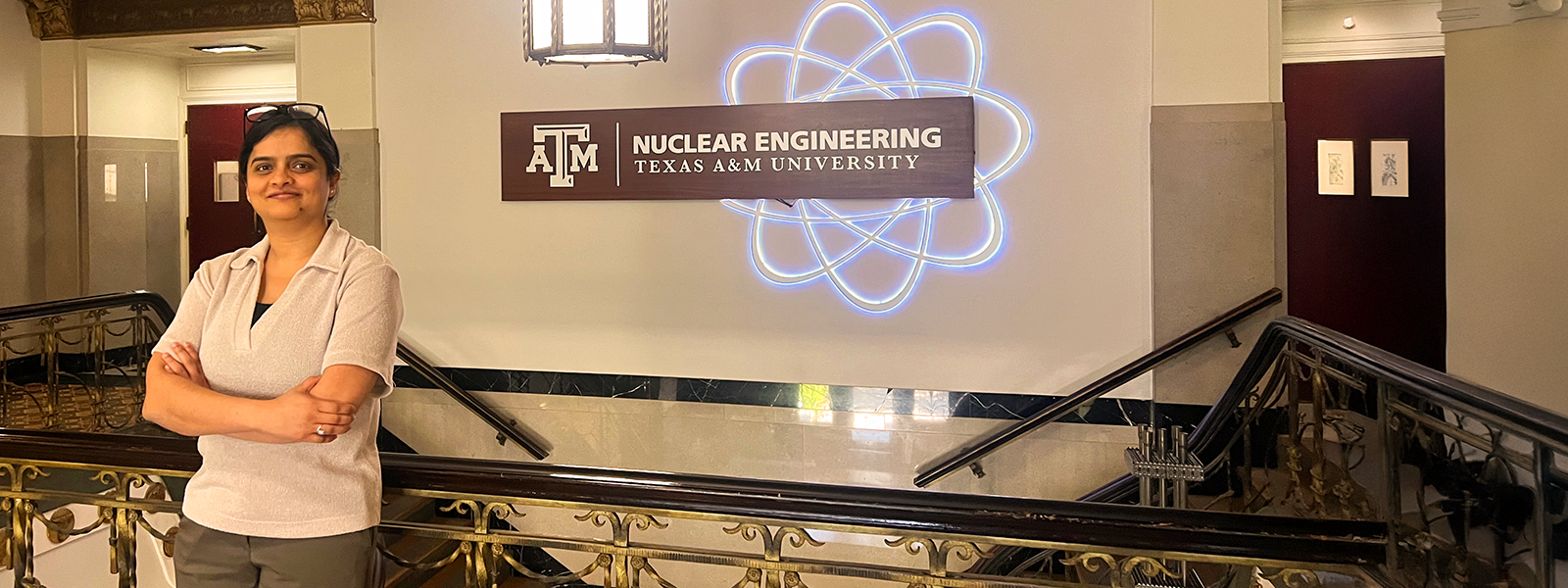

The U.S. Department of Homeland Security has granted a Nuclear Forensics Research Award to a team of researchers at Texas A&M University’s Center for Nuclear Security Science and Policy Initiatives (NSSPI). The three-year project will be led by Research Assistant Professor and NSSPI Faculty Fellow Dr. Farheen Naqvi alongside co-principal investigator Dr. Charles M. Folden III from the Texas A&M Cyclotron Institute. They will collaborate with researchers from the Pacific Northwest National Laboratory (PNNL) to explore the use of gamma-gamma coincidences to enhance the sensitivity of non-destructive analysis and improve spatial localization of fission product isotopes for nuclear forensics applications.
“Nuclear Forensics is important in pre-detonation and post-detonation scenarios where it is critical to analyze and attribute characteristics of the nuclear material,” said Naqvi. She added, “Advancement in experimental analysis is important to overcome the challenges encountered in these measurements due to the nature of the samples, which are often present in contaminated form.”
The project has two primary objectives. The first is to enhance the sensitivity of traditional gamma spectroscopy methods using the gamma-gamma coincidence technique, particularly in scenarios where low-activity radiation and significant background contamination are expected. The second is to utilize traditional gamma spectroscopy and an array of gamma detectors to investigate the spatial characteristics of large forensic samples. The research will draw on the expertise of specialists in nuclear spectroscopy, radiochemistry, and radiation detection.
“We will be developing experimental methods in gamma spectroscopy to investigate the radioactive samples relevant to the field of nuclear forensics,” Naqvi explained. “The interesting part is that while the gamma-gamma coincidence technique is an old and well-established method in experimental nuclear physics, its applicability in extracting signatures for forensic samples has not been exploited to its full potential.”
The collaboration between Texas A&M and PNNL researchers will combine their expertise in both chemistry and gamma spectroscopy to advance experimental methods in nuclear forensics.
“It is encouraging to have received a positive response from DHS,” Naqvi exclaimed. “I believe that our research team is excited and ready to forge a path forward in this field.”
The Nuclear Forensics Research Award aims to foster the next generation of technical experts in nuclear forensics by connecting students with impactful research opportunities. These projects are designed to be carried out in collaboration between their university and a partner laboratory. This project will support graduate students in both nuclear engineering and radiochemistry to complete their degrees and prepare them for careers in U.S. national or defense laboratories.